Today I would like to introduce you to the LEGO Architecture series, and also let you know about the opportunity to vote for the next LEGO Architecture set. (If you just want to vote, scroll to the bottom.)
The LEGO Architecture concept is in fact not new. The history of current LEGO Architecture series can be traced back to the beginning of the 1960s when the LEGO brick’s popularity was still steadily increasing. Godtfred Kirk Christiansen, the then owner of the company, began looking for ways to further expand the LEGO-system, and asked his designers to come up with a set of new components that would add a new dimension to LEGO-building.
Their answer was as simple as it was revolutionary: five elements that matched the existing bricks, but were only one third the height. These new building ‘plates’ made it possible to construct more detailed models than before. This greater LEGO flexibility seemed to match the spirit of the age; where modernist architects were redefining how houses looked, and people were taking an active interest in the design of their dream home. It was from these trends that the LEGO ‘Scale Model’ line was born in early 1962.
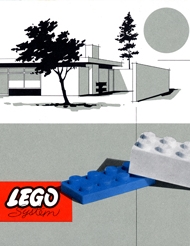 The name itself was a direct link to the way architects and engineers worked, and it was hoped that they and others would build their projects ‘to scale’ in LEGO elements. In fact, I was introduced to LEGO by my dad, who is an architect, and used LEGO for designing scale-models of his work. As with LEGO Architecture today, the original sets were designed to be different from the normal brightly colored LEGO boxes, and also included An Architectural Book for inspiration. Though the five elements remain an integral part of the LEGO building system today, the ‘Scale Model’ line was phased out in 1965 – it would be over 40 years before its principles would be revived in the LEGO Architecture series we know today.
The name itself was a direct link to the way architects and engineers worked, and it was hoped that they and others would build their projects ‘to scale’ in LEGO elements. In fact, I was introduced to LEGO by my dad, who is an architect, and used LEGO for designing scale-models of his work. As with LEGO Architecture today, the original sets were designed to be different from the normal brightly colored LEGO boxes, and also included An Architectural Book for inspiration. Though the five elements remain an integral part of the LEGO building system today, the ‘Scale Model’ line was phased out in 1965 – it would be over 40 years before its principles would be revived in the LEGO Architecture series we know today.
The current LEGO Architecture models are designed by Adam Reed Tucker. Adam’s love of architecture started at an early age in his hometown of Chicago: “Ever since I can remember, I have always been fascinated by the iconic Chicago Skyline. This later inspired me to explore Architecture in hopes of one day becoming an Architect.”
Adam did indeed go on to study architecture, and, inspired by his city’s skyline, developed a passion for skyscrapers. It was his wish to communicate the complexity of skyscraper engineering in simple terms that led him back to another of his childhood passions: “I wanted to level the playing-field with something most of us all grew up with and can relate to no matter who you are or where you came from: The LEGO Brick.”
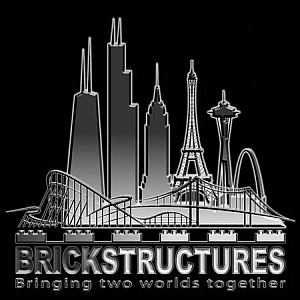 While for many the LEGO brick is not a material typically used as an artist’s medium, Adam Reed Tucker quickly discovered the LEGO brick was lending itself as naturally to his applications as paint to a painter or metal to a blacksmith. As a LEGO Architectural Artist, Adam strives to capture the essence of a particular architectural landmark in its pure sculptural form. He does not view his models as literal replicas, but rather as artistic interpretations using LEGO bricks as a medium. You can check out Adam’s website at BricksSructures.com.
While for many the LEGO brick is not a material typically used as an artist’s medium, Adam Reed Tucker quickly discovered the LEGO brick was lending itself as naturally to his applications as paint to a painter or metal to a blacksmith. As a LEGO Architectural Artist, Adam strives to capture the essence of a particular architectural landmark in its pure sculptural form. He does not view his models as literal replicas, but rather as artistic interpretations using LEGO bricks as a medium. You can check out Adam’s website at BricksSructures.com.
Also, I would suggest paying particular attention to Adam’s insights into the design-process quoted below the sets featured here. Yes, this makes this post quite long, but, it is really interesting to see how a professional LEGO designer’s mind works! 🙂

So far twelve LEGO architecture sets have been released in the series and a couple of more are on the way. Here is a list of the LEGO Architecture sets available so far:
➡ #21000 LEGO ARCHITECTURE WILLIS TOWER – Introducing the LEGO Architecture Landmark series of real-world construction models! This striking black-and-white replica of the famous Willis Tower in Chicago, U.S.A. measures 9″ (228 mm) tall and 3.1″ (80 mm) wide at its labeled base, and includes a booklet full of details about the building’s design and history, plus facts about the real tower. A creative and eye-catching accent for any desk, shelf or mantelpiece! Price: $19.99 – BUY HERE
A word from the artist – Adam Reed Tucker: “As an Architectural Artist my desire is to capture the essence of a particular landmark into its pure sculptural form, especially at this small scale. I first and foremost do not view my models as literal replicas, but rather my own artistic interpretations, harnessing the essence of these landmarks through the use of LEGO® bricks as a medium.”
➡ #21002 LEGO ARCHITECTURE EMPIRE STATE BUILDING – The Empire State Building joins the LEGO Architecture Landmark series of real-world construction models! Standing 7.4″ (188 mm) tall, New York City’s famous skyscraper is built from tan bricks on a striking 3.1″ (80 mm) gray and black base with printed name label. Includes a booklet with details about the building’s history and creation. Perfect for any New Yorker, world tourist or architecture fan! Price: $19.99 – BUY HERE
A word from the artist – Adam Reed Tucker: “This model uses unique building techniques to accurately represent the shifting geometry as the building rises in height. Half stud construction, Technic pieces and placement of ‘Jumper Plates’ were both needed at several locations. The other design challenge was choosing an element for the crowning mast. Originally a single antenna piece was used, but in the end it was the combination of a rod inserted into a cone that best captured the tapering pinnacle.”
➡ #21003 LEGO ARCHITECTURE SEATTLE SPACE NEEDLE – Build Seattle, Washington’s famous Space Needle! Created for the 1962 World’s Fair, this sweeping futuristic tower is the fourth in the LEGO Architecture Landmark series of real-world construction models. Built out of gray bricks, the assembled Space Needle stands 8.7″ (222 mm) tall on a 3.1-inch (80 mm) base with a printed label and includes a booklet with facts about the building, its construction and its history. A striking and imaginative display for your desk, bookshelf or mantelpiece! Price: $19.99 – BUY HERE
A word from the artist – Adam Reed Tucker: “This model interested me primarily due to the futuristic design and Tri-Pod configuration. Studying other LEGO elements such as gears, connectors and saucer shaped discs would be necessary as traditional bricks would obviously not be required. For instance, using a large Technic gear to represent the radial fins at ‘Sky City’ observation deck & restaurant level or smaller beveled gears to represent the ‘Sky Line’ banquet facility. The model is a neat example of what thinking outside the box can achieve for you with non-brick elements.”
➡ #21004 LEGO ARCHITECTURE SOLOMON R. GUGGENHEIM MUSEUM – 2009 marks the 50th anniversary of one of New York City’s best-known museums, the Solomon R. Guggenheim. Designed by Frank Lloyd Wright, one of the greatest architects of the 20th century, the museum opened just six months after he passed away. This intricately built LEGO model, celebrates Frank Lloyd Wright’s innovative vision and organic architectural style. The assembled Solomon R. Guggenheim museum model stands 4″ (102 mm) tall on a gray and black base with printed name label and includes a booklet with facts about the building, its construction and its history. Perfect for any New Yorker, world tourist or architecture fan! Price: $39.99 – BUY HERE
A word from the artist – Adam Reed Tucker: “This model embraces three creative techniques. The first of these is using the natural joints between a series of bricks as a subtle way of indicating geometric details. The second is the playful ways the curved bricks interact with each other really capture the forms essence that gives this museum its distinctive architectural style. Last, the iconic upside down truncated spiral gallery was recreated by clever use of illusion. Here I employed a visual technique making the ‘cone’ seem top heavy by using three disks, then two and then finally one. Since the discs share the same size diameter, making them seem heavy aloft was the necessary trick to fool your eyes into creating the tapering effect through your subconscious imagination. This effect is very subtle, but nonetheless there and effective.”
➡ #21005 LEGO ARCHITECTURE FALLINGWATER – Designed by Frank Lloyd Wright in 1934, Fallingwater is perhaps the most famous residential home in the world. Open to the public since 1963, this masterpiece exemplifies Frank Lloyd Wright’s organic architectural style by intimately merging man with the surrounding landscape. This highly-detailed LEGO model, captures all of the distinctive features that make Fallingwater an architectural landmark. The assembled Fallingwater model stands 10″ (256 mm) wide on a gray base with printed name label and includes a booklet with facts about the building, its construction and its history. A striking and imaginative display for your desk, bookshelf or mantelpiece! Price: $99.99 – BUY HERE
A word from the artist – Adam Reed Tucker: “This LEGO version of Fallingwater underwent a total of 14 design concepts as I tried to incorporate a unique ‘pull-apart’ interactive feature. I was determined to express the dynamic nature of Fallingwaterand hoped to have sections of the model slide out. The real design challenge was therefore figuring out how to disguise where the model would come apartwithout distorting one of Frank Lloyd Wright’s most recognizable achievements. Another design concern was how to carefully balance the playful nature of the river, waterfall, woods, and bridge that embrace and define Fallingwater. These subtle details give Fallingwater context, without which it would not be possible to truly illustrate its beautiful, sensitive and thoughtful design.”
➡ #21006 LEGO ARCHITECTURE THE WHITE HOUSE – There are few structures in the United States with the history and reverence of The White House, designed by James Hoban. On July 16, 1792, President George Washington chose this James Hoban design from six competing designs from renowned architects. This six-story Sandstone structure was meant to command respect for the nation from citizens and foreign visitors. Construction took place from 1792 – 1800 and it was rebuilt by Hoban following the fire of 1814. The assembled White House model stands 9″ (22 cm) wide on a base with printed name label and includes a booklet with facts about the building, its construction and its history. Price: $49.99 – BUY HERE
A word from the artist – Adam Reed Tucker: “My initial concern while designing this model was how to replicate the style without the model appearing to be an ordinary white shoebox. I layered the model by isolating the three major components of the building form. Then I refined each one of those in its own way to emphasize or capture those highlights most often associated with The White House. Starting with the center section I focused on depressing the windows allowing shadows to develop. The last two components that make up the form are the front portico and the back rotunda. Each of these design elements focuses your attention to the center of the house. This center also acts as a spine joining the two symmetrical wings.”
➡ #21007 LEGO ARCHITECTURE ROCKEFELLER CENTER – Rockefeller Center, located in the center of Midtown Manhattan, New York City, represents the largest private building project ever undertaken in modern times. Developed and financed by the Rockefeller family in the 1930s, this 19-building complex is an example of Art Deco and is famous for the many works of art integrated into its design. Price: #39.99 – BUY HERE
A Word from the Artist – Adam Reed Tucker: “Unlike the other models in this series, Rockefeller Center celebrates a gathering of buildings. With this in mind, the essence of this landmark had to be thoughtfully expressed to convey both the art deco styling and its function as a center of commerce. Before concepts were explored I had to first determine what elements needed to be included to best represent the spirit of the Center as a whole and in detail. The heartbeat of the Center can be defined where the social activities intersect, the plaza highlighted by the sculpture & waterfall feature. How to represent these small details next to towering buildings was the challenge. Using a simple 1 x 1 round plate to represent the Prometheus statue was how the entire design concept came to be. From there laying out the streets and buildings quickly took shape defining the perimeter of the overall model. Applying the art deco styling to the buildings was done using half plate techniques and smooth tiles in a monotone color to allow the subtle forms to speak more clearly.”
➡ #21008 LEGO ARCHITECTURE BURJ KHALIFA – Burj Khalifa is the tallest man-made structure ever built, at 2,716.5 ft. This steel, glass and reinforced concrete tower was constructed between 2004 and 2010, led by Skidmore, Owings & Merrill architects. Burj Khalifa was commissioned to help Dubai diversify from an oil-based economy to one that is service and tourism focused. The assembled Burj Khalifa model is over 10” (25cm) tall and 4” (10cm) wide on a base with a printed name label. Includes a booklet with facts about the building, its construction and history. Price: $24.00 – BUY HERE
A word from the artist – Adam Reed Tucker: “In terms of its design, this model really only had a few challenges. As impressive as the real structure is, when captured in its smaller LEGO form the only discernable form is its three-spoke geometry. Y-shapes & triangular shapes can be tricky to construct using square bricks. However, in this case the use of a single Technic three-bladed rotor propeller establishes the basis for the entire model. From there I was able to have nine points and one in the central core totaling 10 nodes from which to build upward vertically, while expanding the propeller to add two downward vertical points from each blade totaling an additional six nodes. So, that single propeller piece anchors all 16 radial nodes and thus capturing the essence of the entire design.”
➡ #21009 LEGO ARCHITECTURE FARNSWORTH HOUSE – Few one-room homes are as strikingly modern and instantly recognizable as the Farnsworth House, designed by Ludwig Mies van der Rohe. This single-story steel structure with floor-to-ceiling glass walls was meant to open a minimalist interior to nature in an extreme way. Construction took place from 1945–1951 on a 60-acre estate beside the Fox River in Plano, Illinois, where it still stands today. The assembled Farnsworth House model is over 10” (25cm) wide on a base with printed name label and includes a booklet with facts about the building, its construction and history. Price: $59.99 – BUY HERE
A Word from the Artist – Adam Reed Tucker: “Farnsworth House is a structure that seemed to have been designed using only ordinary LEGO bricks, lending itself perfectly for exploration as a potential model. The challenge may not seem so obvious: straightforward design and basic LEGO elements, what else could you ask for? However, there are two not so obvious challenges even with a seemingly easy build, namely those of scale and proportion. The scale of the model needs to conform to an appropriate size which can capture all of the detail yet still be small enough to be manageable. In order to effectively replicate the balance between the refined white structural elements and expansive clear glazing, I would have to start with the smallest cross section I could make the vertical exterior columns. After several attempts combining different elements the most promising turned out to be using basic 1×1 bricks. Everything else essentially fell into place now that an implied 1×1 grid was defined: the inviting steps, the floating floor and roof decks, the understated furnishings and cleverly designed built-in elements. It’s fitting that recreating a minimalist symbol of modern architecture was done so with the simplest of LEGO bricks, the humble 1×1.”
➡ #21010 LEGO ARCHITECTURE ROBIE HOUSE – Completed in 1910, the Frederick C. Robie House, located in Chicago’s Hyde Park neighborhood, is considered to be Frank Lloyd Wright’s most accomplished Prairie-style work. Prairie style is acknowledged as the first truly American style, characterized by dominating horizontal lines, banded rows of windows and spacious, open floor plans. F.C. Robie wanted a home that would provide beautiful vistas of the surrounding neighborhood while maintaining privacy for his family. Combined with the long, narrow size and shape, the views inspired Wright’s vision for the 9,062 square foot residence. Price: $199.99 – BUY HERE
A Word from the Artist – Adam Reed Tucker: “Robie House sets itself apart from the other LEGO Architecture models as being the largest, most detailed so far. This model has been nearly 3 years in the making: Due to the complex forms, specific architectural proportions and subtle accents, it became evident that an accurate representation would take some time to develop. The entire model is based on the 33-degree LEGO roof slope element. One of the most identifiable characteristics of the structure is its shallow roof pitch, lending to the strong expressive horizontality. This one piece would establish the scale and thus the level of detail. Some of the details required sideways construction to achieve upper window placements and the iconic vertical wedge- shaped points found at each end. Other notable details include the use of 1×2 plates to show the texture of the brick facade and its coursing wrapping the entire home and the sunken courtyard highlighted by 1×1 tile steps.”
➡ #21011 LEGO ARCHITECTURE BRANDENBURG GATE – Commissioned by King Frederick William II of Prussia as a sign of peace, the Brandenburg Gate is one of Berlin’s most important monuments – both as an architectural landmark and historic symbol – for over 200 years. The grandest of a series of 18 gates through which the city was accessed, the Brandenburg Gate was constructed between 1788 and 1791 from the designs of architect Carl Gotthard Langhans and was inspired by the Propylaea in Athens. Built in sandstone and comprised of 12 Doric columns, the gate’s crown jewel is the Quadriga, a sculpture of a chariot and 4 horses depicting Victoria, the Roman goddess of victory, created by Johann Gottfried Schadow. Price: #34.99 – BUY HERE
A word from the artist – Adam Reed Tucker: “This historical monument contains architectural styling and motifs difficult to accurately replicate in a smaller size. For instance, the colonnades are made using railings scaled to be roughly 1 meter (3 ft.) high, but here clearly take on the feel of 6 meters (20 ft.) tall columns. While this model is seemingly a straightforward build, achieving the 1⁄2 stud width cantilever found highlighting the parameter where the upper cornice meets the frieze seemed tricky. The technique used turned out to be a simple solution using 1×1 round plates offset between 4 full studs and 2×2 tiles above completing the proportionally correct 1⁄2 stud overhang.”
➡ #21012 LEGO ARCHITECTURE SIDNEY OPERA HOUSE – Introducing the world-renowned Sydney Opera House. This masterpiece of expressionist architecture is the vision of young Danish architect, Jørn Utzon, whose unique interlocking vaulted ‘shell’ design beat 933 competitors from 28 countries to win an international design competition held by the New South Wales government in 1959. Combined with the beautiful setting of Sydney Harbour, the opera house has become a true symbol of late modern architecture and one of the most iconic buildings of the 20th century. Price: $39.99 – BUY HERE
A Word from the Artist – Adam Reed Tucker: “The powerful form this iconic structure possesses created unique and difficult challenges. Whereas with previous models I was equally concerned with the form, proportions, scale, color, texture and overall composition, in this challenge I was solely concerned with the peaks of the roof shells. Everything else could be a bit off here and there, but get those peaks wrong and the entire essence of the poetic form would be compromised. Believe it or not the idea for capturing the form came to me while building a model of Buzz Lightyear. His boots used these specialized curved elements which just happened to be white, requiring even less imagination to see these replicating those very identifiable peaks. A few hinges later, some creative staggering here & there and soon the model just built itself. This is a valuable example of how sometimes relying less on your pure imagination and utilizing something to generate inspiration instead can be just as successful.”
Also, recently LEGO has opened up the opportunity for fans to vote on their favorite architectural landmarks as suggestions for future sets in the series. In the first round of voting Habitat 67, designed by Moshe Safdie, was the most popular among the 10 architectural masterpieces profiled. It is now a candidate for a future LEGO Architecture set. There is also a second round of voting currently open, allowing you to choose from another set of 10 architectural landmark. You get three votes, so use them wisely! 😀
I missed out on the first round of voting, however in the second round I voted for the Leaning Tower of Pisa, the Sagrada Familia, and St. Basil’s Cathedral. How about you? 😉


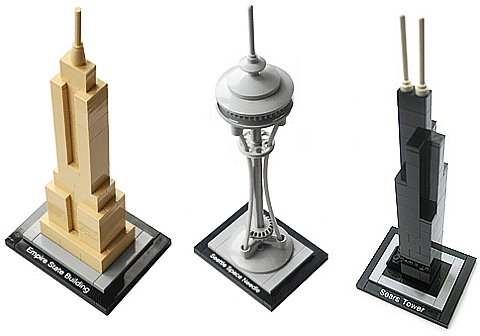
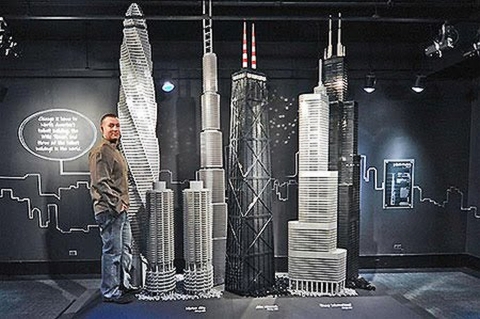
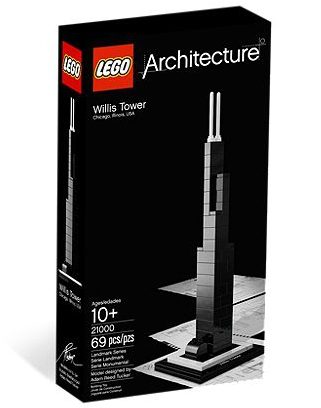
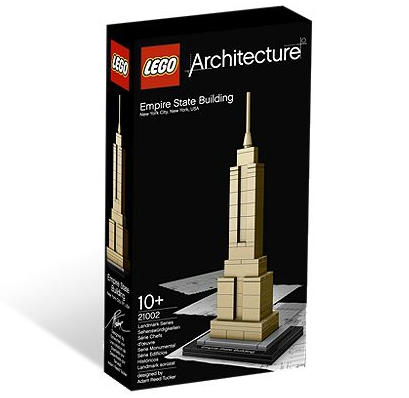
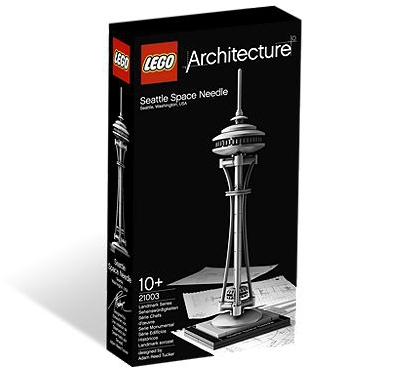
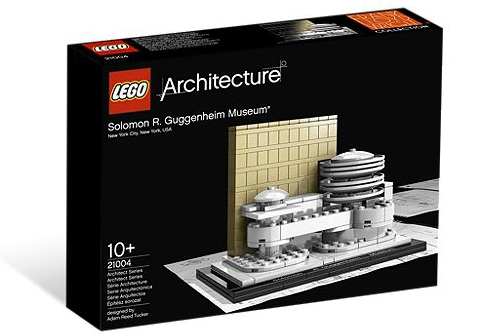
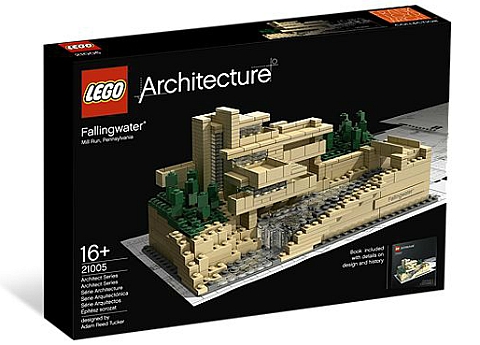
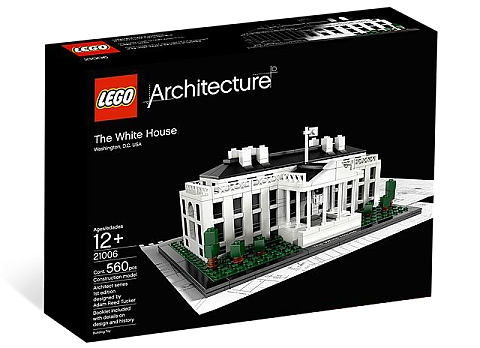


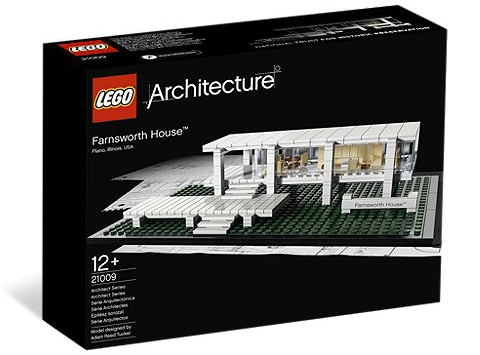
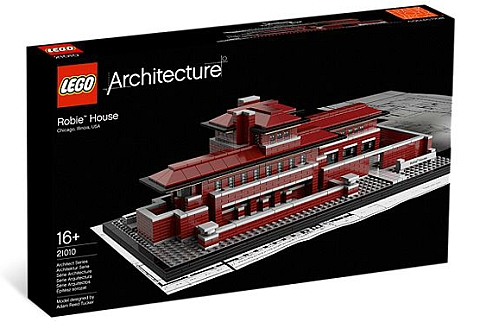
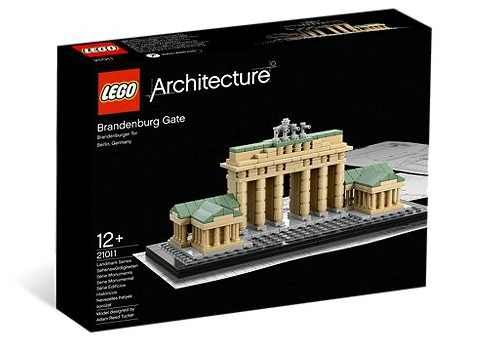
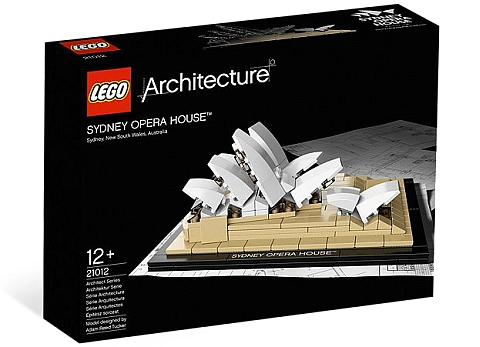

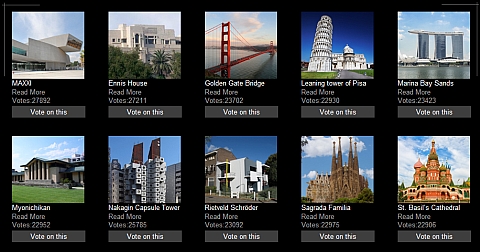










I voted on the golden gate bridge, and St. Basil’s Cathedral…Twice. 😀
Quad, yeah, I hope they make St. Basil! It is one of my favorite buildings and it is just begging to be built out of LEGO! 😀
You guys HAVE TO MAKE the CN Tower!! There is no Canadian architectures.